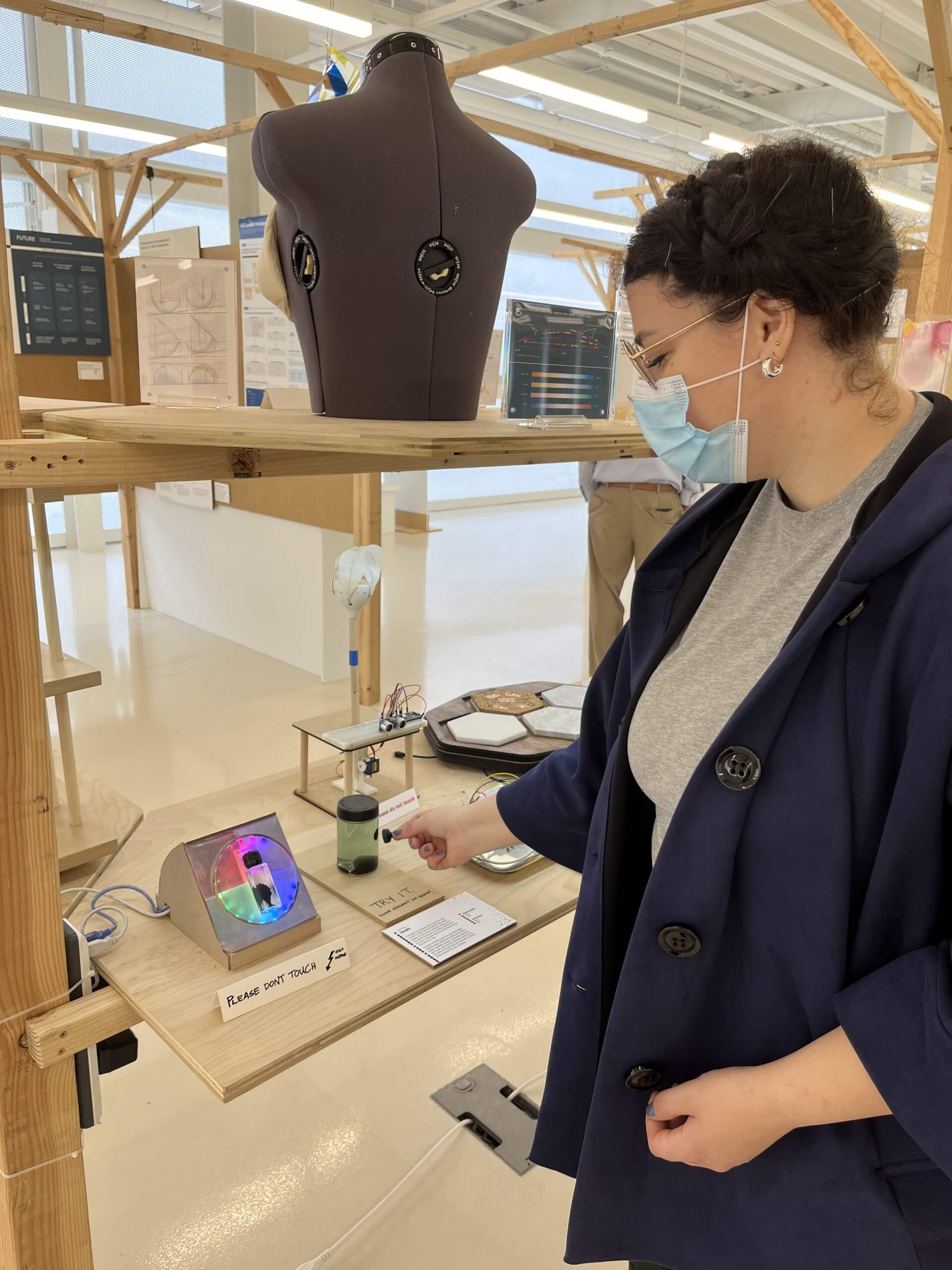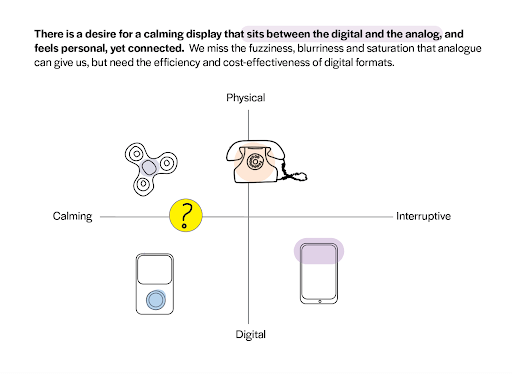Confronting the Problem of Overzealous Phone Notifications
By Aabha A. Kale
December 9, 2022

The average American checks their phone 96 times a day. Most of this time is spent scrolling unnecessary feeds after receiving a notification. Such notifications are designed to capture our attention. They evoke a sense of urgency. Before we know it, we’re back on our phones, scrolling again. The report by the Attentional Harms and Digital Inequalities paper published in 2022 shows that constantly shifting our attention not only impacts our attention spans, but our mental health in general.

ID students Priyanka Lalwani (MDes 2023) and Sahib Thukral (MDes 2023) have developed a low-resolution desk display made of ferrofluid and LED lights. It presents an alternative to constant pings and only captures attention when absolutely necessary. Named after the slow diffusion process of Osmosis, Osmo similarly diffuses information from one’s mobile device. This enables users to work efficiently without being interrupted by a barrage of unnecessary notifications. The device functions as a separate entity from the mobile device, allowing users to gain back their attention spans and decrease stress.
As author David Sax illustrates in his book The Revenge of Analog: Real Things and Why They Matter, more and more of our lives are digitally entangled but humans miss interacting with physical, analogous products that help them focus their minds and provide a sense of calm. Through their user surveys the Osmo team found that many users find it tempting to turn Do Not Disturb features off. Once the phone lights up, the urge to pick it up sets in and starts an endless loop of doom scrolling. The nature of our typical system notifications is disruptive and alarm-driven. But Osmo’s illuminated, subtle notification system, with the ferrofluid coming alive, calms the user instead of demanding attention.
Osmo lets you in on the notification in a gradually colored glow in the background. This approach allows users to remain focused.

Reds give a warning alert, while greens are email reminders. These colors can further be customized per the user’s preferences and priorities. The product also lets the user physically fidget with the ferrofluid bottle and the magnetic liquid motion inside, which can relieve stress or even help increase concentration.
The display was developed as a part of the Digital Media course taught at ID by Assistant Professor of Design Zach Pino. The class takes a data-driven approach, where students learn how to fluently develop their ideas into interactive and responsive outcomes through electronics and programmatic prototyping tools to explore new forms of interaction with digital mediums.
Osmo can play an important role in our information-overloaded digital lives by creating a calming and purposeful work environment that leads to both better mental health and higher productivity.